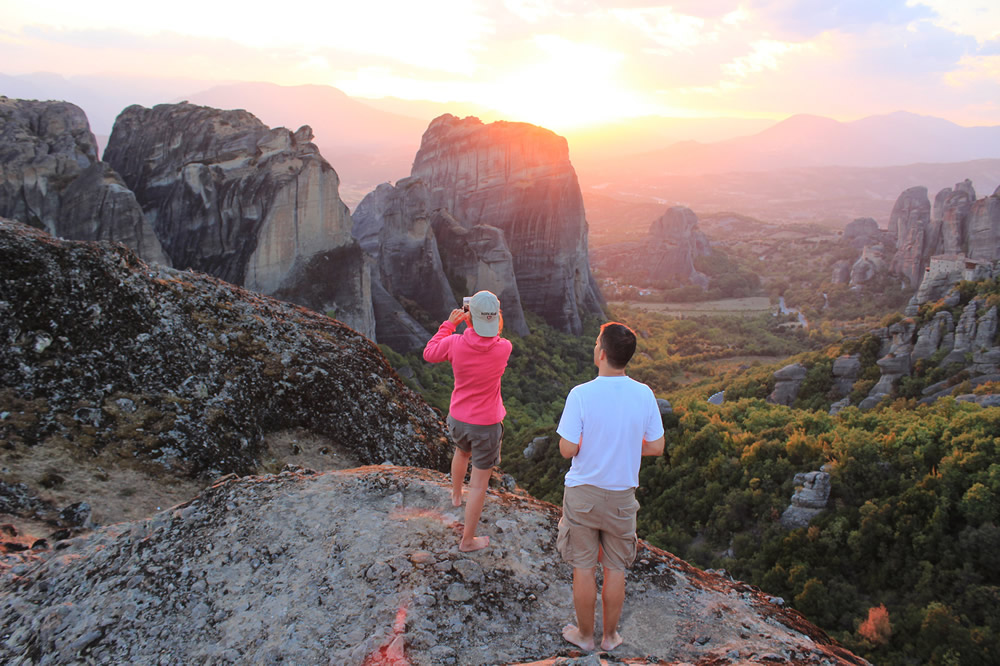SIGHTS IN METEORA
Meteora, the epitome of an incomparable and imposing natural landscape combined with the religious spirituality, will undoubtedly amaze every visitor.
Meteora is a religious place with amazing Byzantine monasteries. This area consists of huge rocks on which monasteries have been built, overlooking a beautiful valley. Although in the past there were hundreds of monasteries and churches, today only 6 of them survive. Except for the monastery of Saint Stephen, which is the most accessible, all the other 5 monasteries are accessible through a long hike on the rocks. The monastery of Great Meteoron is one of the most popular attractions in Meteora, whereas the monastery of Holy Trinity is the most inaccessible.
The Natural History Museum of Meteora & Mushroom Museum opened in November 2014 and is a 5-minute walk from the town center. The museum aims to present the natural history and the importance of the Meteora area, as well as, various aspects of the world’s natural history. The museum hosts an interesting collection of birds that live mainly in Greece and Europe, as well as in other parts of the world. Some of these birds are protected or have become extinct. A similar collection of mammals is on display at the museum, as well as a rich collection of mushrooms of various sizes and origins. The museum has a special room for art exhibitions and workshops.
The stone bridge of Porta Panagia or Saint Vissarion, which was named after the founder of Saint Vissarion’s monastery, is located 1.6 km west of the village Pyli. The bridge is located in an admirable landscape and has a height of 13.30 meters and a diameter of 28.20 meters. The side walls are 0.30 meters wide and 0.70 meters high. The total length of the bridge is 65 meters. The bridge was built in 1514 on the initiative of Saint Vissarion, who had the reputation of starting many public works for the benefit of the people who financed the construction of this impressive bridge. Its construction was very important because until 1936 this was the only way to connect the plain of Trikala with the villages of Aspropotamos.
Antihasia Nature Reserve is located near the town of Kalabaka. It covers an area of 8,550 acres. This shelter houses a variety of flora and fauna. An important area is covered by Mediterranean deciduous trees. At higher altitudes, there are small areas covered by beech vegetation. Some of the fauna found in the Antihasia refuge includes birds of prey such as Griffon vultures, Egyptian vultures, eagles, black eagles and buzzards. The population of these rare species has declined at an alarming rate in recent decades, mainly because of the illegal hunting and the inconvenience caused by climbers, causing serious concern to environmentalists. However, visitors will find the Antihasia Nature Reserve an ideal area for hiking but, it is recommended to be aware of the fragile ecology of the area.
The choices are endless and the truth is that the natural landscape of Meteora is an attraction in itself and it promises to all visitors unforgettable and unique moments.

